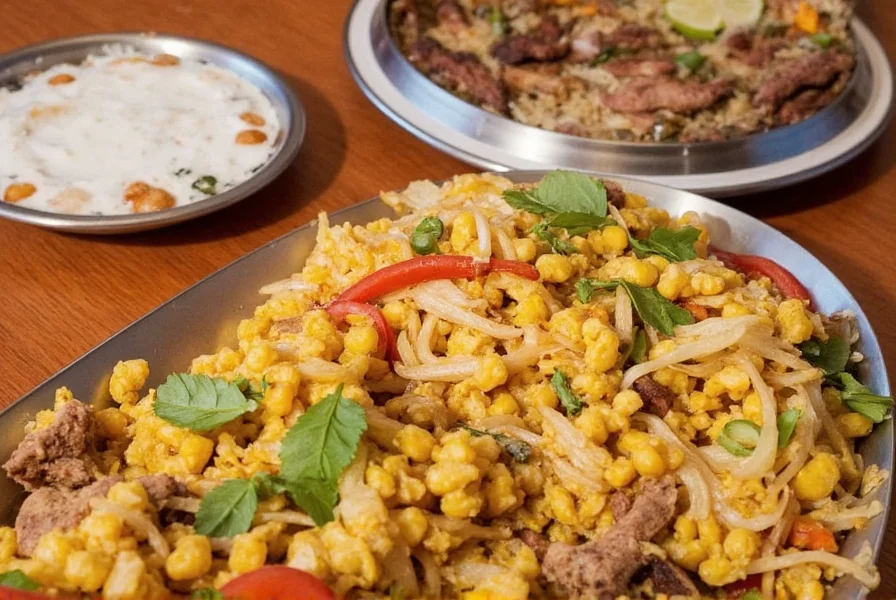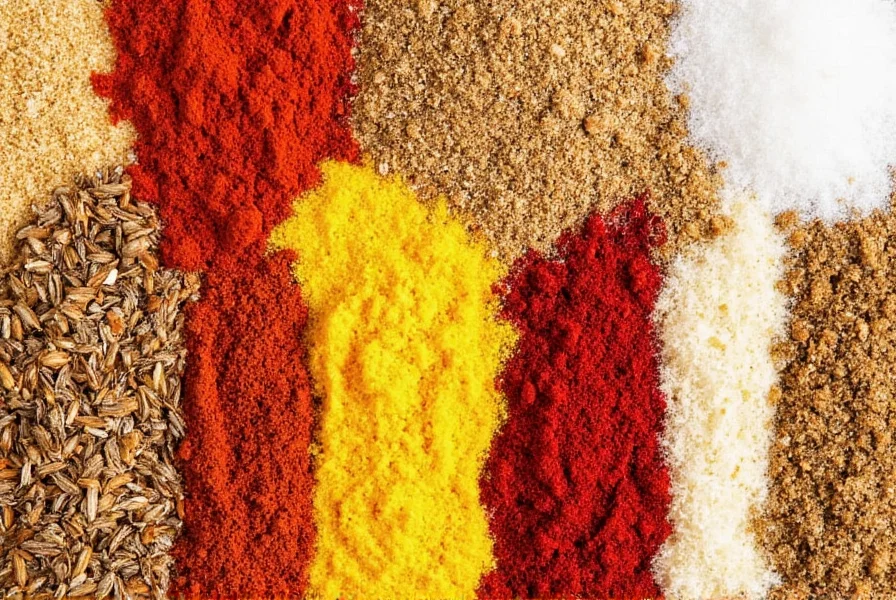7 Spicy Secrets to Mastering Indian Cuisine at Home (Even If You're a Rookie!)
Table of Contents
- Introduction: Why Indian Cuisine is All About the Spice
- Secret #1: Build Your Masala Toolkit
- Secret #2: Toast Your Spices Like a Pro
- Secret #3: Know Your Curry Styles
- Secret #4: Use Garam Masala Smartly
- Secret #5: Master the Art of Tempering (Tadka)
- Secret #6: Balance Heat with Coolness
- Secret #7: Don’t Skip the Fresh Herbs
- Buying Guide: What to Look For in Indian Spices
- Conclusion: Spice Up Your Kitchen, One Tadka at a Time
Introduction: Why Indian Cuisine is All About the Spice
Indian cuisine isn't just about spicy food — it's a symphony of aromas, textures, and flavor profiles that have evolved over centuries across a diverse subcontinent. From the fiery curries of South India to the creamy delights of North Indian kitchens, one constant remains: spices are the heart of every dish.

Cooking Indian cuisine can seem intimidating at first, especially if you're staring down a lineup of unfamiliar powders and seeds. But once you understand how these spices work together — and more importantly, when to use them — you’ll find yourself reaching for your masala dabba more often than any other pantry shelf.
Secret #1: Build Your Masala Toolkit
Just like a painter needs colors, an Indian cook needs spices. Here’s a list of essential spices you should always keep stocked:
- Turmeric
- Cumin
- Coriander powder
- Red chili powder
- Garam masala
- Fenugreek
- Mustard seeds
- Cardamom (both green and black)
- Cinnamon & cloves
- Asafoetida (Hing)
| Spice | Flavor Profile | Common Uses |
|---|---|---|
| Cumin | Eartyh, nutty, slightly bitter | Dal, tadkas, biryani |
| Coriander Powder | Floral, citrusy | Curries, marinades, chutneys |
| Garam Masala | Warm, complex | Finishers for gravies and stews |
| Red Chili Powder | Hot, earthy | Add heat to dishes |
Secret #2: Toast Your Spices Like a Pro
One of the most overlooked steps in home Indian cooking is toasting the spices. This process unlocks the volatile oils and intensifies their aroma. It’s the difference between flat-tasting powder and a fragrant curry base.
How to do it:
- In a dry skillet or small pan, toast whole seeds like cumin, mustard, or fennel on medium-low heat until they begin to crackle and darken slightly.
- For powdered spices, add them to hot oil after tempering seeds. Stir constantly and don’t walk away — they burn quickly!

Secret #3: Know Your Curry Styles
Contrary to popular belief, “curry” isn’t a single thing — it’s a category. Understanding the regional differences can help you tailor your cooking:
| Region | Signature Style | Key Ingredients |
|---|---|---|
| North India | Creamy, rich | Ghee, cream, tomatoes, garam masala |
| South India | Tangy, coconut-based | Coconut milk, tamarind, curry leaves |
| East India (Bengali) | Delicate, aromatic | Mild spices, mustard oil, fish |
| West India (Gujarati) | Sweet & savory | Jaggery, peanuts, dried mango powder |
Secret #4: Use Garam Masala Smartly
Garam masala is not just another spice blend — it’s the soul of many North Indian dishes. However, it’s easy to overdo it.
- Add near the end of cooking to preserve its fragrance.
- Store it in an airtight container away from light to keep it fresh longer.
- Make your own blend for a fresher taste (we'll cover that in the buying guide).
Secret #5: Master the Art of Tempering (Tadka)
Tadka is the act of frying whole spices in oil or ghee to release their flavors, then adding them to a dish right before serving. It’s the final flourish that makes dal sing and sambar pop.
Classic tadka combos:
- Mustard seeds + urad dal + curry leaves
- Cumin + garlic + dried red chilies
- Onion + cinnamon + cardamom (for biryani)
Secret #6: Balance Heat with Coolness
Not all Indian food has to scorch your tongue. The secret to great spice balance is layering heat with cooling elements:
- Yogurt-based side dishes (like raita) to tame the fire
- Cilantro or mint chutney for freshness
- Adding cashew paste or cream to soften heat
Secret #7: Don’t Skip the Fresh Herbs
While spices provide depth, fresh herbs bring brightness. Always finish your dish with a sprinkle of:
- Cilantro (coriander leaves)
- Kothmir (Thai basil)
- Mint (especially for chutneys and biryanis)
Buying Guide: What to Look For in Indian Spices
Shopping for spices can be overwhelming, especially with so many brands and blends out there. Here’s what to look for:
Whole vs. Ground Spices
Whole spices last longer and retain their potency better than ground versions. Invest in a small spice grinder if you're serious about flavor.
Top Spice Brands to Consider
| Brand | Features | Best For | Price Range |
|---|---|---|---|
| MDH | Strong aroma, affordable | Daily cooking | $ |
| Everest | Consistent quality, bold flavors | Weekend cooking and parties | $$ |
| Patanjali | Natural, organic options | Health-conscious cooks | $$ |
| Spice Garden | Premium blends, hand-mixed | Special occasions | $$$ |
What to Look for When Buying
- Aroma: Fresh spices should smell potent, not dusty.
- Packaging: Choose resealable or airtight containers.
- Expiry Dates: Ground spices last ~1 year; whole spices up to 3 years.
- Color: Vibrant color = fresh spice (especially important for turmeric and chili powders).
Conclusion: Spice Up Your Kitchen, One Tadka at a Time
Mastering Indian cuisine doesn’t require decades of experience — just a willingness to play with spices and embrace bold flavors. With these seven secrets tucked into your apron pocket, you’re well on your way to creating restaurant-worthy meals from your own kitchen.
Remember: the key to great Indian food is not perfection — it’s passion. So go ahead, open that spice drawer, turn on the stove, and let the magic happen. Happy cooking!










 浙公网安备
33010002000092号
浙公网安备
33010002000092号 浙B2-20120091-4
浙B2-20120091-4